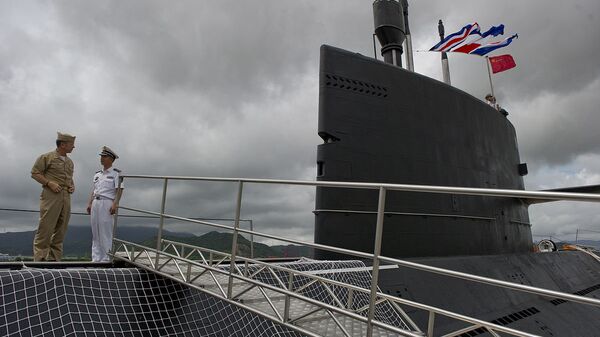Three Chinese vessels, the guided-missile frigate Jingzhou, the missile destroyer Chaohu and the destroyer Changchun, took part in the drill, where they "carried out strikes against ‘enemy’ surface ships and completed transverse replenishment of fuel and drinking water during an exercise that lasted for several days," according to Chinese state news agency Xinhua.
The maneuver comes just after China and India resolved their standoff in the Himalayas over the Doklam plateau, which saw the two nations’ armed forces face off over a disputed border, and as Beijing makes operational its Djibouti naval base, the country’s first overseas naval installation.
Chen Denan, the Chinese fleet’s chief of staff, explained, "the drill is aimed at improving the ships’ performance under real combat circumstances."
New Delhi has long showed concern about China’s movements in the Indian Ocean. China frequently conducts drills in those waters with other navies, including counter-piracy drills in the Gulf of Aden with the US in 2013. Beijing counters these worries by claiming their presence in the Indian Ocean is a matter of disaster relief and humanitarian aid.
Given the recent standoff between New Delhi and Beijing, Shanghai-based military affairs commentator Ni Lexiong believes the drills are a sign that China could be preparing for full on conflict with India. Ni told the South China Morning Post, "if a full-scale war happens, the ocean will be a key field … And China needs to make a gesture that it is prepared for potential conflict."
A Chinese defense white paper published in 2015 said that Beijing’s Navy would be shifting its attention gradually from only offshore waters defense to include open seas protection as well.
The PLAN dispatched vessels for anti-piracy missions after the Aris 13 merchant fuel tanker was hijacked off the coast of Somalia earlier this year. This was the first hijacking since 2012.



